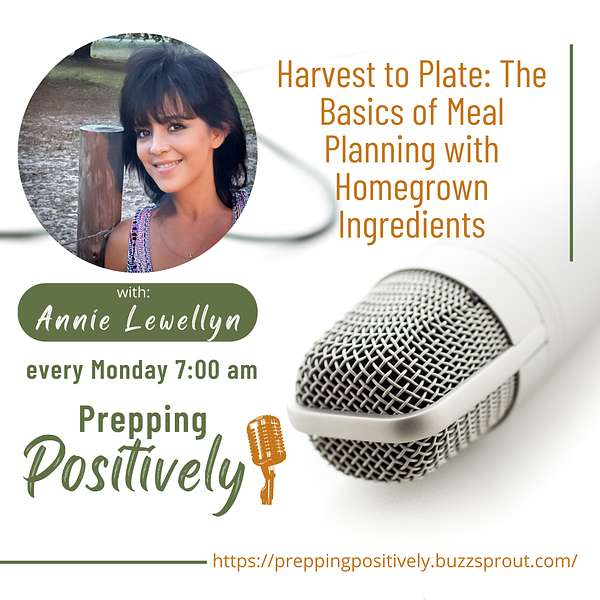
Prepping Positively
Prepping skills taught on a positive note. From growing your own food and stocking a prepper pantry, to providing your own water and electricity and making your own natural remedies, learn the prepping skills you need to sustain you and your family through any crisis.
Prepping Positively
Harvest to Plate: The Basics of Meal Planning with Homegrown Ingredients
Join me on this culinary journey as we explore the basics of meal planning with homegrown ingredients.
Join me on this culinary journey as we explore the basics of meal planning with homegrown ingredients.
Hello, and welcome back to Prepping Positively. I'm Annie, your host, and today we're diving into a topic that brings together the joys of gardening and the satisfaction of a well-prepared meal.
Let's start with why incorporating homegrown produce into your meal plans is a game-changer. Not only does it elevate the flavor and nutritional value of your dishes, but it also connects you with the entire process - from seed to plate. There's something truly special about harvesting your own ingredients and transforming them into a delicious, homemade meal.
The first step is knowing what's in your garden. Take inventory of the herbs, vegetables, and fruits you have growing. Whether it's vibrant basil, juicy tomatoes, or crisp lettuce, understanding what's available will guide your meal-planning decisions.
Now, let's talk about planning your meals around your harvest. Consider what's ready to be picked and base your meals on those ingredients. For example, if you have an abundance of tomatoes, plan a caprese salad, homemade tomato sauce, or a refreshing gazpacho. The key is to let your garden inspire your culinary creations.
Variety is key to a well-balanced meal plan. Incorporate a mix of vegetables, herbs, and fruits into your daily or weekly menus. This not only ensures a diverse range of nutrients but also keeps your meals exciting and enjoyable. Experiment with different combinations and discover what works best for your taste buds.
Timing is crucial. Plan meals that align with your gardening schedule. If you have a burst of basil coming up, schedule pesto pasta or caprese sandwiches. Additionally, consider preserving excess harvest through methods like freezing, drying, or pickling, so you can enjoy your homegrown produce even during off-seasons.
Now, let's address the practical aspect of meal prepping. Chop, wash, and store your homegrown ingredients in a way that makes cooking a breeze. Having prepped ingredients readily available saves time and makes it more likely that you'll stick to your planned meals.
Lastly, share the joy of your homegrown meals with others. Host a garden-to-table dinner with friends or family. It not only spreads the positivity of homegrown living but also provides a sense of community and shared appreciation for fresh, delicious food.
As we wrap up today's episode, remember that meal planning with homegrown ingredients is not just about sustenance; it's a celebration of the journey from garden to plate. In upcoming episodes, we'll explore specific recipes, cooking techniques, and creative ways to make the most of your bountiful harvest.
Thank you for joining me on this flavorful adventure today on Prepping Positively. If you enjoyed this episode, please subscribe, leave a review, and share it with fellow gardening and cooking enthusiasts. Until next time, keep prepping positively, and may your meals be as vibrant as your garden!